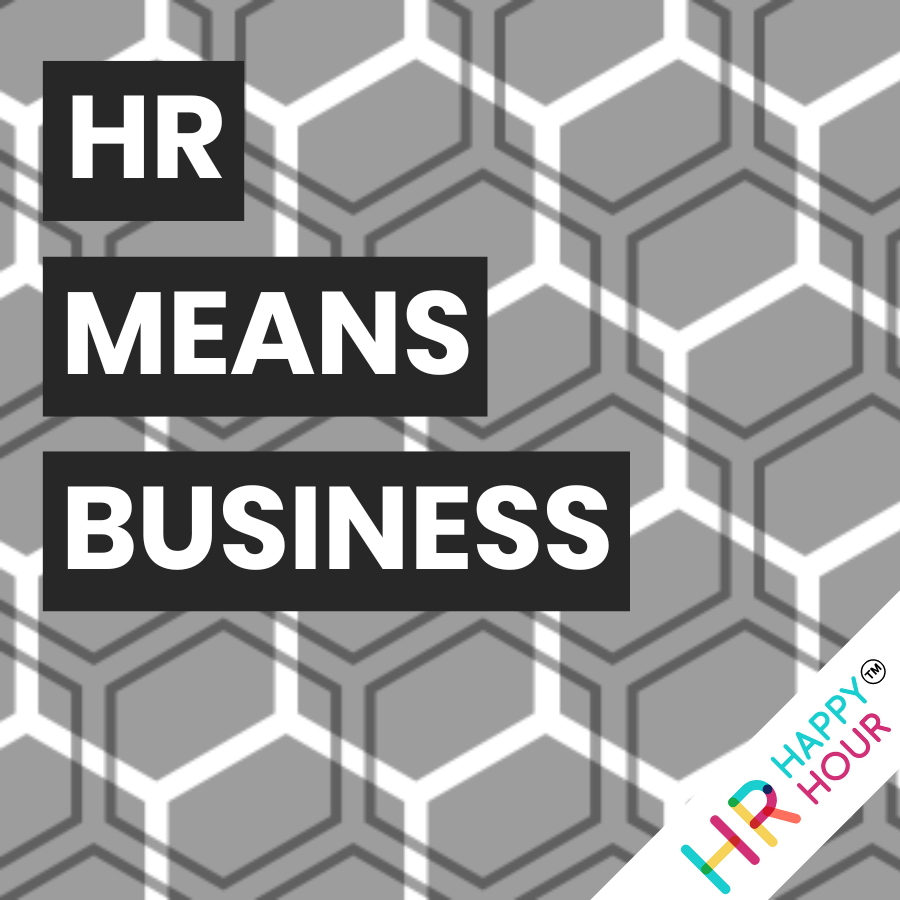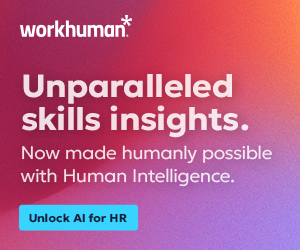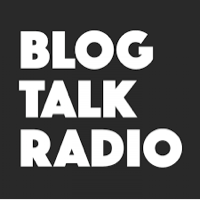Creating a Resilient Culture of Equitable Flexibility and Empathetic Leadership
Hosted by

Mervyn Dinnen
Analyst, Author, Commentator & Influencer
About this episode
HR Means Business 16: Creating a Resilient Culture of Equitable Flexibility and Empathetic Leadership
Host: Mervyn Dinnen
Guests: Robert Ordever, Managing Director Europe and Stuart Cheeseman, European Strategist, O.C. Tanner
In this episode Mervyn talks to Robert Ordever (Managing Director Europe) and Stuart Cheeseman (European Strategist) from O.C Tanner about some of the key findings of the O. C. Tanner Institute’s 2024 Global Culture Report.
They discuss:
– Opportunities for organisations in 2024
– Creating equitable flexibility for all employees
– The frontline worker experience
– The need for practical and empathetic leadership
– Focus on skill-building for the whole workforce
– Putting people at the heart of change programmes
* The report can be downloaded at https://www.octanner.com/global-culture-report
Thanks for listening! Remember to subscribe to all of the HR Happy Hour Media Network shows on your favorite podcast app!
Transcript follows:
Mervyn Dinnen 0:15
Hello and welcome to the HR Means Business podcast, which is part of the HR Happy Hour Network. I’m your host, Mervyn Dinnen. And today we are going to be talking about culture. One of my favorite events that I go to every year is called Influence Greatness, which takes place up in the mountains of Salt Lake City in Utah and hosted by OC Tanner, where they publish their globe their annual global culture report. This year was no exception. And I’m delighted today to be able to welcome two people from OC Tanner in Europe, Robert Ordever, who is the managing director, and Stuart Cheeseman, who is head of partnerships to talk about the findings from this year’s global culture report from a more European perspective. So firstly, Robert, would you like to introduce yourself?
Robert Ordever 1:07
Yes, hi, Mervyn. Firstly, thanks for having us on the podcast. As you said, I’m the managing director of OC Tanner in Europe. For anyone listening who doesn’t know OC Tanner, we’re a large kind of global organization based out of the US and I have the privilege of leading the team over here in Europe.
Mervyn Dinnen 1:25
And Stuart.
Stuart Cheeseman 1:28
Hi, everyone, thank you for for having us on today’s podcast. So I’m still achievement, I have a wealth of HR consultancy and an HR experience through technologies. I have a great role where I really get to build those partnerships, as you’ve mentioned, but also look at strategic work, and how we drive one our business forward in Europe, but how we’re really sort of integrating that with where our clients and our partners want to be in regards to their business strategies that that great link of what we’re seeing out in the in the current volatile markets and workplaces and how we’ve hopefully got the solutions to help clients to change that, that aspect.
Mervyn Dinnen 2:07
That’s great. If I start with Robert, I suppose what what, what for you were the key findings or themes in the report that was published last last month?
Robert Ordever 2:19
It’s interesting moment, and I full disclosure, right? This is around 200 pages of data, heavy research. And I have in front of me, the camera cards here, just scribbled notes everywhere, as I started to think ahead of this conversation, kind of what are the pertinent points? And I think there’s a there’s a number of things that are in the report, which are aha moments, right. They’re not necessarily things that are brand new topics, but our ability to kind of dig a bit deeper. One of the examples is around practical empathy. And, you know, the world is a volatile place, right? And I think the the sense that leaders need to have a level of empathy is not new. But actually we start to really understand in the research, the difference it makes, when that’s truly practical, when there’s frameworks around it, when we know the boundaries, right? Because leaders have had to be empathetic for a number of years. And frankly, it’s burning them out. So how, you know, how do we make that long term sustainable. So I think that’s one area. I think the other area that was particularly kind of hit home for me. And it’s something that has been on my mind a lot since the pandemic is the 80%. Right, and this is the 80% of workers that are untethered deskless. However, you want to phrase them, that their workers who during the pandemic, we were out on our doorsteps cheering and noticing and recognizing and perhaps for the first time they felt seen and heard. And the research kind of suggests that that group is starting to feel like they’re fading back into the, to the background a bit. And I think that’s, that’s really key. It’s a responsibility for all of us. And I think maybe you and I have talked about this before moving to somebody that’s that I know, is troubled a number of us in the HR world is as the HR world is focused on hybrid versus remote versus you know, we’re kind of forgetting that most people don’t have that choice. Right. There’s a lot of site dependent workers, and frankly, they’re the ones that are keeping the rest of us. The rest of us going it’s a large majority. So tons of good stuff in the report. But I think those two areas that practical empathy and you know how we connect and hear the 80% I think those are the two bits that for me were the most pertinent the sheer.
Mervyn Dinnen 4:47
I would agree with you I think I should say at this point, and I will say at other points there will be a link in the show notes where you can download the report. It’s noticeable to me, having been too Two or three, I suppose international conferences over the last few weeks that the, the 80% or I suppose that they refer to as the frontline workers, sometimes the deskless workforce, the hourly workforce, but but I’ve noticed them being referred to as the frontline workforce, that as a topic of conversation at all of these events have been the frontline worker experience and how we boost that and improve that. So it’s, it’s clearly a key theme. Stuart, what what were your key takeaways?
Stuart Cheeseman 5:33
Yeah, slightly separately. All great takeaways, of course, might have been. The one thing I always think about is what’s happening in business, what’s happening in industry. And when we think about what’s happening in Europe, in particular, and actually is truly global, of course, but what’s happening in Europe, what we’re seeing is volatility, as mentioned, that uncertainty, we’ve still got over the last couple of years that that fight for town, that war for talent, how we appreciate that talent. So I like the idea that our employees are thinking ever slightly different about the sort of contract with their employer at the moment. It’s a different type of mold to what it was a couple of years ago. And the reason I say that is because creating that sense of belonging is incredibly important. And you think about the volatility, it may be this, this was an insert, it may be that we’re seeing volatility in regards to sort of m&a activity being incredibly high. A lot of organizations certainly in Europe at the moment are restructuring. So thinking about that, and and how you go through that change management process of doing that, again, we’ve cultural, it’s hotbed. And then the final thing there is the upskill movement we’re having or or the the skilling movement that we’re having. The reason I think that’s incredibly important, because as we sort of factor in some of these macroeconomics and geopolitical solution, situations, at the moment, we’re seeing a lot of organizations either having to change their products or we diversify or as they grow for, for m&a activity. We’re needing greater skill sets. And of course, that also comes with legislative legislative requirements, as well as local legislation. Legislation dictates certain things around products or or alike. So really, we’re in this volatile position, and we’re asking our employees are changing in front of our faces more than ever have done so really understanding how we create that culture underneath all of this to drive sort of the Nimble resilience that we need in order to make sure business continues to thrive in factoring in some of these external factors, for me, to to upskill, to make sure that the culture drives the business forward was was one thing that jumps out to me in the report.
Mervyn Dinnen 7:38
It’s a great point, actually, because there’s been, I suppose, over the last two, three years, in particular, there’s been quite a focus on skills, but one of the things I loved about it was the use of the word skill building, because this is what I think this is what employees this is how they see it. And, you know, we talked about skill development and things like that, and having access to learning. But this kind of building and seeing it as as I suppose, almost supporting our people in building the skills that they need to, because they know their jobs are changing and evolving and all that all the time. So it’s as opposed to learning which is something it’s almost like we’re imposing on them. Skill Building, I love it, because it it brings in the notion of it’s something they are doing themselves to help improve themselves and and to say they can make a better contribution. If I stay with you, Stuart, what are you because you’re obviously speaking to clients and organizations all the time? I’m not saying Robert isn’t, but that’s your day to day job. What a client saying to you at the moment, how are they seeing? Kind of particularly, obviously HR leads, how are they seeing seeing the market at the moment?
Stuart Cheeseman 8:49
I thought long and hard how to potentially answer from our from our previous discussions. I think what I’m what I’m generally seeing is the last couple of years have been incredibly difficult in our landscape. Can we either we don’t always want to go back to what happened a couple of a couple of years ago, but it’s having having the that era of how paternalistic are we with our employees as well at the moment, so you won’t believe it Mervyn, but but a lot of dogs have come into my conversations even with CHRO leaders where someone will have a COVID dog. And that means that we can’t get back into the office as much as we want, because we don’t have care for our dogs. Now, not laboring on that point. But it really does lead us towards how we need to make it worth it for employees to get back in their office, or wherever their location was how we create that culture. And like I say, drive that drive that business forward. The other thing I’m really learning and I’m seeing as well is that we know that HR challenges are on the present I feel sorry for HR leaders because in the last couple of years, their their job responsibilities have probably been their tasks have gone up to three fold. So we’re relying on our on our HR leaders more so than we have done before. I think that’s out of actually you’d like to say that that view of the employee wanting to be more or wanting more paternalism from their employer. But why I mentioned all this is because I think sometimes what I’m seeing is actually identifying where the challenges are. We know those challenges are there. But how does that actually relate back to a territory, a business unit, a function within the business, and then understanding how you deploy strategies to overcome that, of course, a lot of it has to be holistic cultures. But understanding certainly with businesses in Europe, where there are so many countries within that territory, how different nuanced countries are approaching their cultures, perhaps slightly differently, country by country, but under one holistic banner. So I think identifying using data to drive data driven strategies towards overcoming some of those challenges is incredibly important as well.
Mervyn Dinnen 10:54
And Robert, what I suppose the the issues that organizations are trying to deal with, when when they’re using the tech for an organization like yourself to do I guess we’re mainly retention, is it or are you finding it’s, it’s, it’s more to do with kind of immediate culture now?
Robert Ordever 11:17
Yeah, it’s interesting, I think it, it differs, right, we have a range of clients who are at different stages in their journey, it wouldn’t be unusual for for a client to approach us to want our support, because they have some immediate challenges. It could be retention, it could be well being it can be connecting to their frontline, whatever that immediate need is. And then as that partnership kind of evolves, it almost always becomes much more about business advantage. So they’re not doing it to solve a problem. And they might, that might be the initial indicator for them to go, I need something. But it always evolves into how do we use that to, to better build our business. So an example I would give, if you think about skill building, we would, we will help organizations recognize employees who are building their skills, and in doing so help the business improve their resilience to change. And the business in turn is helping its retention, its well being its connection, its ability to communicate purpose. There’s always lots of, you know, kind of elements to it. But I would say, and sure, maybe maybe you’ll have a view on this. But I would say often it was start with something needs, improving. employee survey scores, whatever it might be, and then it kind of quickly moves on to them being able to see the benefits of the business of doing so. I think we we know, because we’ve been in the business for forever. We know there’s real business ROI. But sometimes that trigger for people to start having the conversation to enable them to see that ROI is something’s not right, something’s been a challenge. It could be, you know, it can be about global connection, we saw a lot of that, kind of during the pandemic, people moved worked remotely, suddenly, people looking for a better way to connect and show each other what great work looks like that post pandemic that continues to be important because they’ve started to see the business results, not just the sticky plaster issue like that they originally looked for.
Stuart Cheeseman 13:29
Yeah, I think that’s a very good point in regards to let’s think about this as fulfillment and belonging, if you create the right fulfillment and belonging with an organization of psychological safety, where employees can be outspoken to improve results and to shape and change business, and they’re comfortable in doing so, then you have a thriving business, and then that almost mitigates some of your average challenges, isn’t it in regards to why would I want to leave this business? Well, I know I belong, I know I’ve got a vehicle to go forward and succeed. So so for me it’s it’s that I think the the other interesting point that we are seeing sort of the culture and perhaps recognition come a little bit more into into play as even from a product line. Okay, so where there’s service related industry, an airline may be a good example where we’re seeing employees be the face of the organization at times of difficulty, whether there’s a flight canceled or whatever, or there’s suddenly upheaval, sometimes a lot outside of the business’s control, we’re actually seeing that used to prompt the reaction of how in a service orientated business, the employees are gearing themselves and bit gearing their business for success as well. So, again, it’s a couple of measures that are certainly around the retention piece measuring and making sure that error fulfillment, but also to outwardly improve the business as well from from the sort of ground up.
Mervyn Dinnen 14:46
Yeah, that was talking to the frontline workforce. There was a stat wasn’t there something around 50% of it, of them feel expendable? Yeah.
Robert Ordever 14:57
Yeah. Which is pretty sad, right? I mean, If you think about the high regard in which they were considered when, when we were struggling, and some some disconnect has happened there. And I think, you know, I think some of that, as we’ve talked about is being so focused on remote working and returning and what the new normal, we don’t hear that phrase anymore. I think we’ve all accepted it, there isn’t any such thing as a normal. But I think I think whilst we will focus on that we lost touch, I think of some of that, some of that connection with our frontline. And we see, now we have some, there’s some incredible stories of people doing good stuff. And you’ll have seen some of this, I’m sure that influence greatness, but the work that Starbucks are doing, to connect with those people who are who are frontline in their stores, the work that I ag and insurance company about out of Australia did to connect to their people during some of the kind of natural disasters that they weren’t having to tackle. There’s some really good examples out there. I think that 50% is a really shocking number. And there’s clearly a lot more work to do. And it shouldn’t take a natural disaster or a crisis to have us understand the importance of you know, and I think this is a theme for all of the report, actually. And it’s not new, but the importance of hearing people, of seeing people have them feeling like they are connected, and seeing, you know, even skill building, you know, giving people some autonomy over how they build skills is saying I see you, I hear you I invest in you. It’s important to our resilience as a business. But it’s important to build your resilience as a as an employee. So I think there’s there’s kind of that theme that runs through it. And it’s, you know, you see stats like 50%, and you just you just realize how much work there really still is to do.
Mervyn Dinnen 16:50
I’d definitely definitely. There’s also good cause with flexibility. Again, the conversation very much centers around, I suppose white collar black, back office workers. But they’re also findings in the report about kind of more equitable flexit flexibility. Stewart, is that something that you’re picking up in your discussions?
Stuart Cheeseman 17:17
Yeah, absolutely. I think we need to, we need to make sure we’re first of all, we’re we’re nimble in our in our flexibility, that sounds sounds silly, it’s almost same, same description, but we need to make sure we’re proactive. We’re, we’re considering this, I think it goes back to that point of how you do it, but you’re not discriminating, or you’re making it an equal playing field. But I think at the same point, we have to be nimble with that. And in order to make sure that we’re doing things on an equal playing field, but for the business’s benefit, as well. So yeah, look, I think that’s something we’re seeing quite a bit. There are still one out there still organizations that are really different in regards to their flexibility and how they’re looking to perhaps draw a line under it and move forward. But I think it’s an omnipresent challenge, or always be here. And but I think the message is you have to evolve, you have to consider how you do things and make sure that like you say, it’s on an equal playing field, where it’s, it’s, it’s not one dis disadvantageous to the organization, but actually, you’re getting the most out of your employees, and you’re creating a culture, which allows, again, allows the organization to thrive.
Robert Ordever 18:27
I think there’s a there was some other interesting conversation I was I was having internally around how we approach equitable flexibility. And I think what’s interesting sometimes is to look just a bit deeper than what we’ve naturally see this flexibility, which is where I work or when I work, but also how I work. And we I mean, we have a large number of workers I’ve met I think you’ve visited our HQ, we have a large number of workers who are on the factory floor, right manufacturing distribution. And whilst they have a shift time that maybe it’s harder to move than it might be for, say, Stuart or, or my role, the autonomy that we’re able to give them in terms of experimenting control over how the work is done in terms of what’s prioritized and how its priority has given them the chance to be creative within that sometimes is a missed element. You know, I think it’s very easy to say, well, you know, you can’t change the shift of a, of a Starbucks barista, we have an open time and a shift time. But actually, businesses are able to give some level of autonomy or flexibility in terms of how the work is done and how the team is operating, I think I think can gain some advantage there. It helps people feel trusted and valued. In the same way that you know that that might be the case for someone who can go and pick up their kids from school and you know, you may not be able to afford them every flexibility but it’s easy for us to say it doesn’t apply to this role, or it can’t apply to this role. Well then what can happen We’d be more creative, more thoughtful, more deliberate in terms of that kind of equitable flexibility across the workforce.
Mervyn Dinnen 20:08
Do you think some of this plays into the findings around empathetic leadership or practical empathy? Particularly, I know in part of the report, it mentions kind of empathy fatigue amongst leaders. So what I mean, is this part of the same thing, or do you think that the there’s advice you can give for leaders who are listening who maybe would like to know, and understand a bit more about this more practical, empathetic approach?
Stuart Cheeseman 20:38
Yeah, I think to answer my mind, I think, again, much like HR leaders, our leaders were under greater pressure and asked to do so much more than than they ever have done before, again, with volatility within business that’s putting more pressure pressure on leaders, it’s sort of bring that together with what we were saying over changing employee as well, which I think we’ve certainly seen over the last couple of years. And there are obviously what we’ve gone through there’s there’s wellbeing criteria here to consider as well. So I think there’s a balance is what I’m trying to say is is how and understand your workforce. What are their talent magnets, I love that phrase or talent, magnet talent magnets, how do we know how to get the best out of them? But I think a lot of it is through empathy and a lot of industry communication, as well. So how are we communicating? And it might be different levels of communication to certain different business units or different personnel, within effect, but I think we need to, we need to come first and realize that we have different employees, their view, like I said earlier on their view of, of their contract with us as employers now is incredibly different. So again, I think consideration out of all that is absolute focus should be the focus going forward.
Robert Ordever 21:55
I think that sorry, I was just gonna say I think the the important kind of moment, for me, when I was kind of reading through this, this part of the research is the word practical. So I think we’ve long understood that leaders need to be empathetic need to understand, but it’s how you turn that into some kind of action. Now, of course, in our world, we have always kind of had that as part of our recognition strategy, right? You know, what, what great work are you calling out might be different for one than another. Because if the leader truly understands the background, what they’re going through, what their challenges are, what you know, how they’re how they’re building skills, whatever it might be, it allows you to do something practical with it. I think, sometimes maybe my background is HR. And, you know, I’ve been doing it for a long time, and you kind of my entry into HR was, you know, is Tea and Sympathy and we listened lots, you know, and I think that we will recognize those days have shifted, and they have for line managers too. You know, we don’t just expect that line managers can absorb and hold all of that accountability. And so, you know, to stress point, we look out for leaders, and we have to establish boundaries. But also we have to empower them to be able to do something about it, you know, that they have the autonomy to be able to say, I can help with this, and to have the boundaries to know when is the right time for me to bring someone else in or to pass it. We’re not training leaders to be therapists, right? We’re, it’s practical empathy. Again, it comes back to listening, listening and seeing and being our to make a difference to people.
Mervyn Dinnen 23:32
I should at this point, let people know listening, if you go way back to Episode One of HR means business, you’re, you’re finally talking to Robert, about his early career in HR and belonging. So there you go. Change Management was also mentioned, effective change management, because again, in the last three to four years, I’ve seen many, many shifts. What are you, I suppose finding in terms of how that is shifting, particularly, I suppose from a kind of more of a UK European lens.
Stuart Cheeseman 24:08
Yeah, I think we alluded to earlier, we’re seeing that volatility. I keep going back to that, but we’re seeing significant change in m&a activity, increasing a lot of reorganization, restructuring, as well as like we say, potentially diversification in products, meaning we built the skill building, as such. So all of this becomes very significant change within within business. One thing I recently spent I spoke to on our virtual influence greatness session with Capgemini spoke a lot about how he’s changing significant practices from an HR perspective within the business, but the consideration of culture and what that means, of course, having defined an excellent change managers within the business to bring efficiency and cost saving measures is absolutely relevant. But let’s not let’s not But let’s not forget about everyone else that’s on board the journey of that change management process. How are we making sure that everyone is part of that culture, everyone is belonging, to make sure they’re driving to the same outcomes as well. So a lot of that is communication. A lot of that a lot of that is recognizing the teams that are changing with the business as we go through that process, making sure we’re recognizing that, and just really communicating with them of the work that they’re doing as well. So I think it’s a combination of efficiency there and making sure that we’re creating a culture and an environment for those projects to be successful as well.
Mervyn Dinnen 25:34
Okay. As I said at the beginning, it’s a fascinating report. We’ve been picking, I suppose a few of the key points from it. Can I ask you, I suppose, because we’re coming towards the end of the chat, if you could, individually, I’ll start with Robert, the, I suppose the two or three things that if somebody said said to you, I haven’t got time to read this whole thing? What are the three things I need to know? What would you say they are? And before you answer, you will have time to read it, because it’s all very good stuff.
Robert Ordever 26:08
Yeah, find time to read it. It’s available on OCtanner.com. I know it’s gonna be in the show notes. It is a, you know, it’s one of those pieces that we release it every year. And every year, I read it once, read it twice. And I continually kind of have to get back to it. There’s some helpful reminders in there. Top two or three things, I think there’s a definitely a thread through here, I’ve said it before around listening, and really listening. Not, you know, not just sending a survey out. But listening. When you talk about change, there was a great status, and I’ve written it somewhere here, something like that. If you listen to employees, and you involve them in conversations, even if the outcome is not what they’re looking for, the chance of that change being perceived as positive is like 1200, and something percent improved. So I think I think there’s a real thing to hear about about listening more thing. The other thing that I’d encourage us is towards the back of the report, there’s some detail kind of analysis regionally around the globe. And I’m always you know, I’m always fascinated to look at that. But I’m always unsurprised perhaps at how similar people are and people needs are right. So Denmark might have a slightly higher score than Belgium In one particularly column and Germany, more than Switzerland, another column. But actually, these themes are fairly, fairly global. And I think that it’s always it shouldn’t, it shouldn’t shock any of us. But I think it’s always good to see it born out in the research, it’s very easy for us to say it. But what’s great about the work that our Institute does is they give us the data, they give us the data that helps us ensure that this isn’t just a nice thing to do. But we continue to kind of refine our product, our advice and our support for the people we work with.
Stuart Cheeseman 27:53
Yeah, I think just the develop that moment, let’s not forget the report is, is a dataset from large, a large hundreds of 1000s of employees and employers around the world and go back to Robert’s point there, especially in Europe, when we when we consider how many countries there are in Europe. That nuances that we’ve spoken a little bit about earlier, and understanding how that may may different a lot of our clients, of course, are global, where we’re also comparing territories by territories. So So for me, a great point by Robert to steer towards the analytics at the back of or, like any report is very, very exciting and informative executive summaries. But for me, I the one thing I wanted to say, I’ve spoken to a lot of leaders that used a report, almost define that business case, use some of the statistics out of that report to go back and say, This is why we need to improve our culture, this is what we need to do. If a if an organization can have their retention statistics or percentages, or absenteeism levels, there are statistics in there that gives examples to go back into the business and say this is my ambition to change the culture. Because it means that we can save X, Y and Zed or we can increase our productivity by x, y and Zed as well. So there’s a couple of things. There’s just using the data, and then using the data to think about how it can impact impact the business or the reader as well.
Mervyn Dinnen 29:16
That’s great advice, actually. And I I mean for me that when I first before we had our first session in the US on it, I was just flicking through if you like the key findings, you know, give me the summary first and then we’ll dig into detail. I just the words you know resilience, equitable flexibility, empathetic leadership awareness. Effective it’s a very positive, but it’s also understanding it’s practical. It’s understanding it’s all about listening to people, which is something that the research across the board tends to find organizations don’t necessarily do well enough. So it’s no I think it’s a great report. The link will be in the show notes. OC Tanner.com is where you can also find it. And I would like to thank Robert and Stuart. Thank you. Thank you know, it’s a pleasure. It’s a great chat and hopefully, listeners will will will download we read and we will have much more empathetic equitable organizations. Thank you. You’re welcome.
Transcribed by https://otter.ai
Talk to us
If you want to know more about any aspect of HR Happy Hour Media Network, or if you want to find out more about a show topic, then get in touch.









